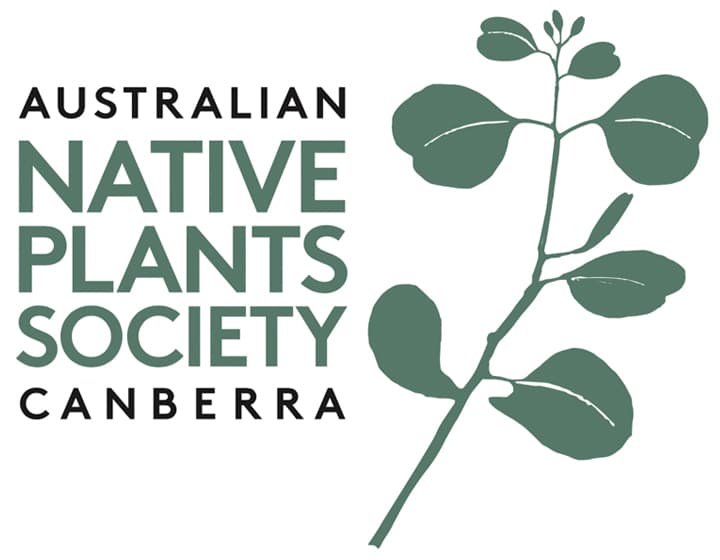Guerilla Bay Bioblitz
By Lyndal Thorburn
June 2021
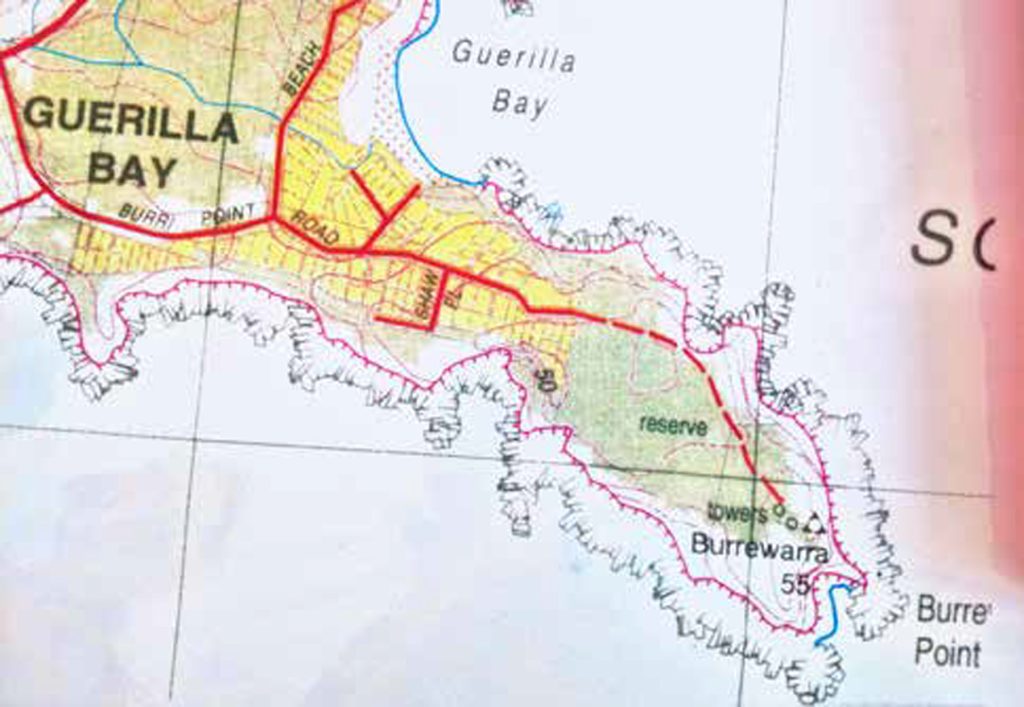
It was a sunny but windy early autumn Friday when we drove from Queanbeyan down to the South Coast of NSW to participate in the Guerilla Bay BioBlitz for two days. The Bioblitz had been organised by the Guerilla Bay Landcare group in conjunction with the SE NSW region group of APS NSW, to which we belong. We turned up at the Burrewarra carpark at the end of Burri Point Road, to meet an enthusiastic group, decked out with hats, sunscreen, insect repellent (for the ticks!) and binoculars. The aim of the event was to list local plants and animals, but locals with little knowledge were also encouraged to come along and learn about what they could do to enhance the attractiveness of their properties for the local fauna and flora.
. Individuals could register to attend some or all of the organised surveys. Attendees had already conducted a bird survey from 7am to 8:30am and the first two plant surveys – one of the coastal reserve and one of the Burrewarra Point Reserve. This reserve turned out to have an interesting history. It now forms part of the Guerilla Bay-Burrewarra Point reserve, but during World War II a RAAF Operational Unit was stationed there and the site included a radar station and a rifle range. As one of the few World War II sites in the Eurobodalla Region, it is listed with the National Trust.
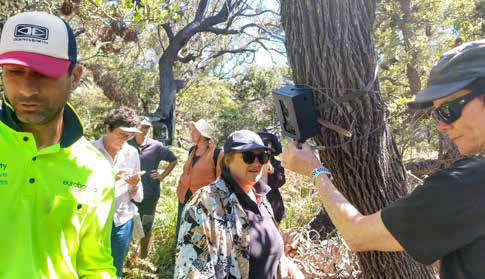
Locals’ memories didn’t go that far back but many did recall the Point as a dairy farm with cattle in the 1950s and 1960s. This means that the “mature banksias” referred to in current nature guides can be no more than 70 years old. These banksias are now leaning and falling, along with the old Allocasuarinas, which grow along the edge of the cliffs. The vegetation map for Batemans Bay classifies most of the Point as “disturbed land” with some headland grassland and forest. The Council staff who also attended the event recounted stories of the whole area being covered in the weed Bitou Bush, and spending years poisoning it to support the regrowth of more natural vegetation. Even now, they survey for bitou bush along the cliffs, and send in abseiling teams to poison individual plants growing on the cliffs, every year.
When we arrived at 11am, the group was being briefed for the two-stage mammalian fauna survey. We were shown how to set camera traps (using camouflaged infra-red cameras) and hair traps (funnels with glued-paper along their lengths and bait at the end, pegged to the ground). For both, the bait is a mix of oatmeal, peanut butter and honey. For the camera traps, this is placed in a spherical tea-strainer directly opposite the camera. For the hair traps, the bait is placed at the base and the trap is pinned down in place – whoever visits can’t eat the bait but they do leave hair stuck on the sticky paper that lines the trap. After placing our traps around the Point, we headed off to our hotel, while the next plant survey and the nestbox-building lessons got underway
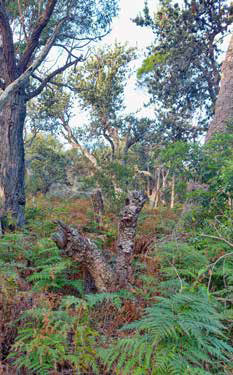
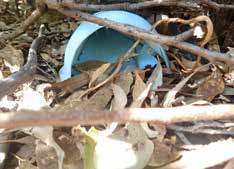

We returned to the Point at 5pm for the evening bird survey. It was still quite windy, and we were disappointed in the small number of species we saw. These included, however, Brown Thornbills, New Holland Honeyeaters, Variegated Wrens, Little Wattlebirds, White-bellied Sea-eagles and Australasian Gannets. After dinner, we returned for the insect survey. Two white sheets had been set up vertically behind the registration area, with a combined white light and blacklight (ultraviolet range). It was still windy and it took a while for insects to arrive, but we were pleased in the end as we saw some spectacular moths, the largest being a Double-headed Hawk Moth (a large moth with orange underwings) and a very tattered Emperor Gum Moth
There were plenty of smaller moths and a very active Huntsman spider. Another group went spotlighting at the same time and saw brushtail possums and feathertail gliders.
On Saturday morning we turned up, this time to retrieve the animal traps. We found most of them easily, but one of our tea-strainer bait balls had been well and truly munched, and something large had tried to escape with one of our hair funnel traps. The videos told thestory – a bandicoot had been active in front of the camera trap and a brushtail possum had left hairs behind in one of our hair traps. We also saw a fox on all of our camera trap videos (possibly the same fox, roaming widely), and several Antechinus (marsupial mice).
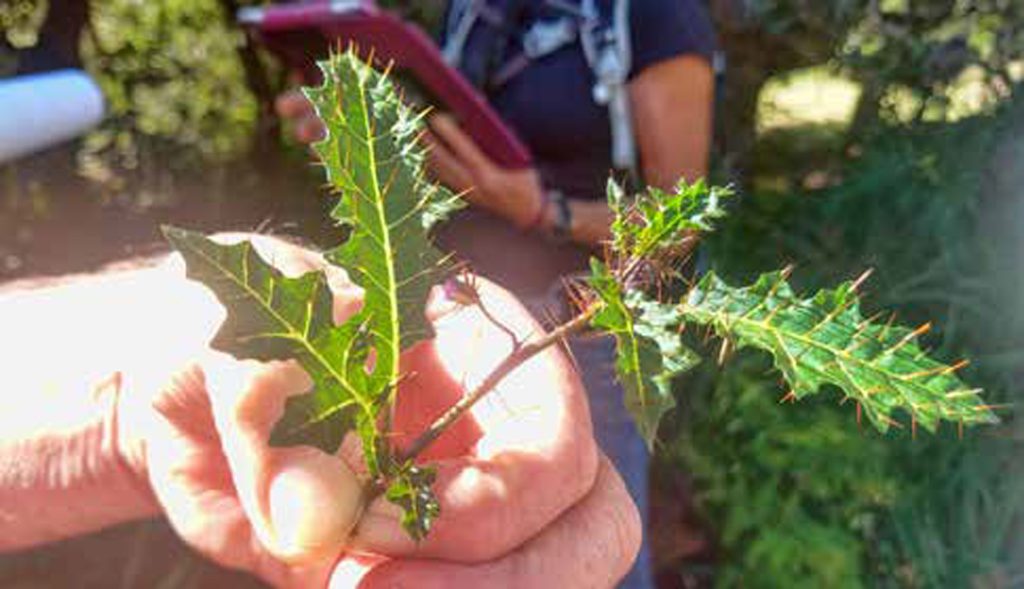
Our final activity for the weekend was a plant survey. True to form for plant-people, it was scheduled for 1.5 hours and took 2.5 hours, because we couldn’t get more than one or two metres before having to stop to inspect something. The leader of our walk, John Knight, spent a lot of time discussing weeds vs local species, and talking about how some local species (e.g. Breynia oblongifolia (Coffee Bush) or Commelina cyanea (Native Wandering Jew) could be turned into respectable garden plants with a bit of pruning, or by growing in a hanging basket. Much of the ground vegetation on the Point is bracken growing amongst the banksias and eucalypts. Our walk took us to the edge of the Point, where a fire in 2019 had burnt out a banksia grove. While many plants had returned, the area was dominated by Lomandra longifolia. We passed through a wetter area, which has a natural spring. The vegetation changed here to be dominated by Leptospermum and Melaleuca, with Acacia mearnsii. In places we found Eleaocarpus reticulata, a massive vine called Marsdenia rostrata and something that looked like a firewheel tree (south of its natural range).
). We finished our visit to the coast after this plant walk. Yet another plant walk was conducted along the coastal reserve (behind Guerilla Bay houses) in the afternoon, and the whole event wound up at about 5pm. The organiserswould have been very tired!! But also, I think, they would have been very pleased about the turnout and the amount of data gathered. This is all being entered into the iNaturalist app, to add to the local record of both native and feral species. iNaturalist is taking over from the Budawang Nature Map as the main “citizen science” data repository for the Eurobodalla region. iNaturalist is a joint initiative by the California Academy of Sciences and the National Geographic Society and is available worldwide. The Guerilla Bay Bioblitz is listed as a project on iNaturalist and at the end of the weekend had accumulated almost 400 observations.

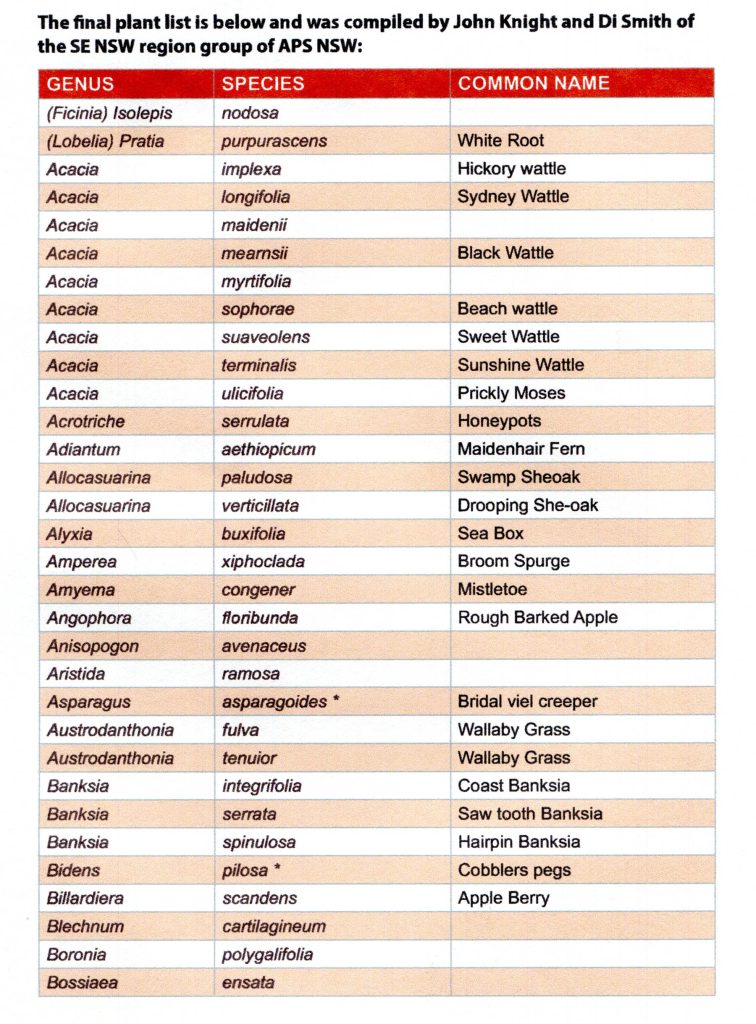


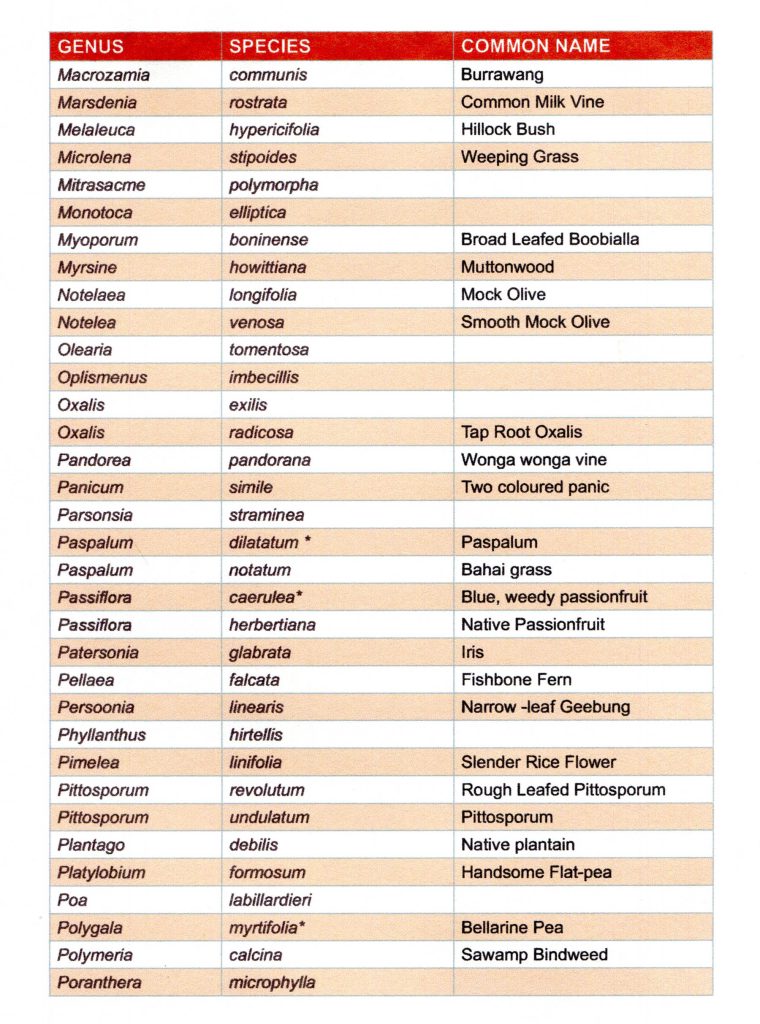
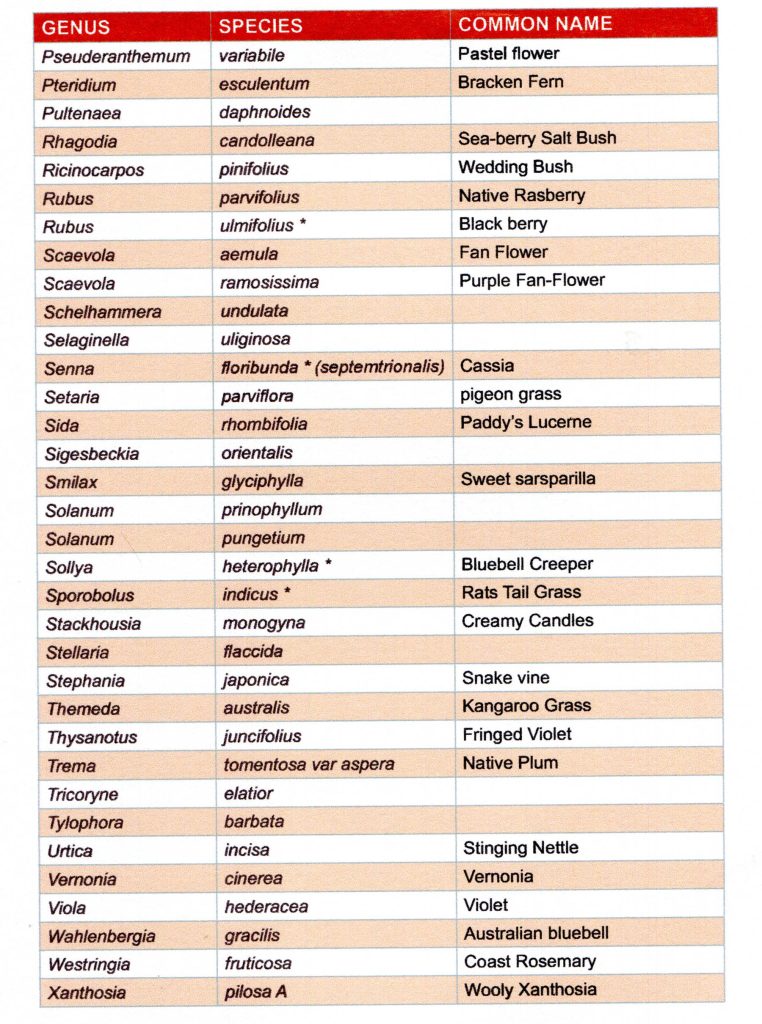
Back to Articles List
